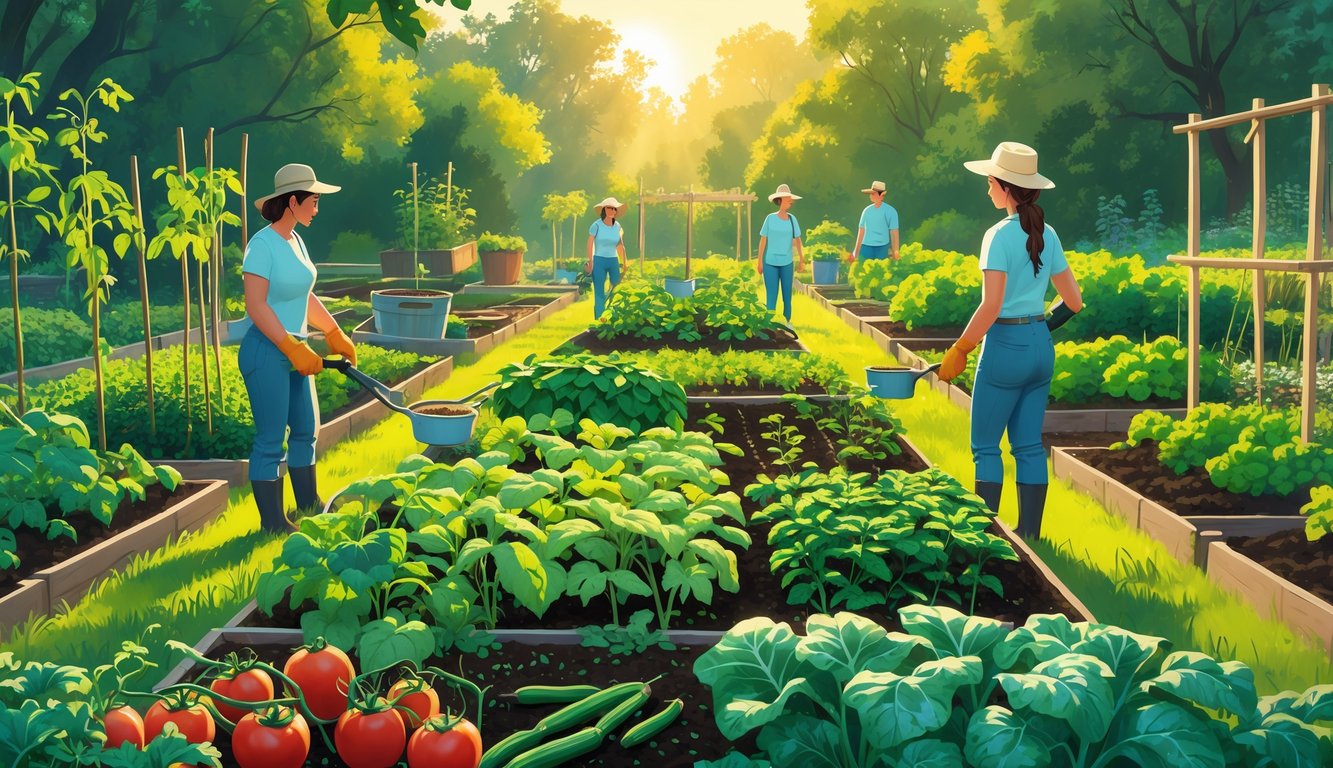
I swear, every time I look out the window, my neighbor’s tomatoes have gotten bigger. Like, are they sneaking steroids into the soil at midnight or what? Meanwhile, my own herbs are still in those sad little plastic pots from last season. I keep reading all these “expert” tips—companion planting, compost, blah blah blah—and honestly? Most of the folks with monster harvests aren’t glued to their gardens every day. They’re just doing a couple of things that sound suspiciously lazy. Companion planting, dumping compost, maybe writing moon phase notes in a weird notebook if you’re that one guy online. Also, can someone explain why broomsticks as tomato stakes are a thing? No science, but my old gardening mentor swore by broken rakes, so maybe there’s something to it.
Here’s how it usually goes: someone on a forum brags about worm castings—“my beans exploded last June, swear to God”—but then we’re off talking about whether keeping a garden journal is worth it, and suddenly I’m down a rabbit hole about high tunnel planting strategies. There’s no magic app or gadget. Just a handful of habits that don’t look like much. I tried low tunnels once—half of them turned into puddles after a storm, but the spinach in the survivors? Best I’ve ever had.
Still annoyed about skipping mulch last year. Rabbits threw a rave in my lettuce patch. Social media makes it all look so easy, but the real heavy hitters? They admit they forget to water, toss in some companion plants, and just let things happen. If you want big results without losing your mind, you might want to try being a little lazier. Or maybe a lot.
Foundations of Low-Effort Gardening
I don’t get why people act like gardening is some kind of penance. If your soil’s alive and you stop micromanaging, you actually get to watch stuff grow. It’s kind of fun, honestly. I stopped fussing over every leaf, and suddenly things just worked. Maybe not perfectly, but better.
Principles of a Low-Maintenance Garden
Last year, I spent hours spreading mulch, cursing the sun and wondering why nobody told me it’s not just for looks. Mulch is basically armor. Shredded bark wins over straw, unless you’re in slug country. No-dig folks keep saying “just leave the soil alone, it’s like a forest floor.” I mean, forests don’t have anyone out there tilling, right? Good enough for me.
And watering? I gave up on reminders. Drip irrigation with a timer is the only reason my plants survived my week-long vacation. I don’t weed every inch, either. If you plant densely, weeds just give up. I read somewhere (here), you should smother, not battle. Works for me.
Choosing the Right Plants for Your Climate
Honestly, who buys those “trendy” plants that hate your climate? I’ve killed enough “rare” seedlings to know better. “Right plant, right place”—I wish I could tattoo that on every seed packet. Native perennials? Boring, maybe, but they don’t care about heat waves or sudden hail. They just keep going.
There’s research on this stuff—Dr. Emma Harper from Minnesota said native plants use “up to 60% less water.” That’s less money wasted. I’ll grab drought-resistant seeds like echinacea or yarrow any day. This guide says don’t pick drama queens. I agree. Fussy annuals never gave me a bumper crop.
Establishing Healthy Soil Naturally
Soil test kits? Total joke. The colors never match. Want real soil health? Get earthworms and compost that doesn’t smell like death. I started using cover crops in winter, and the roots broke up my hard clay without me lifting a finger.
Bagged compost is fine, but local leaf litter plus cardboard does the job for free. Dr. Masabni at Texas A&M said undisturbed soil “lets nutrients move naturally”. I didn’t buy it until I tried it. Mushrooms freaked me out at first, but now I know they’re just proof the soil’s doing its thing.
No-Dig Gardening Methods
I wish there was a compost fairy, but no. Skipping the shovel actually works. You just pile organic stuff on top, and nature sorts it out. Less weeding, fewer complaints from my knees, more worms.
How No-Dig Gardens Work
Halfway through last summer, I dumped cardboard and half-rotted compost on a bed I’d given up on. The clay was so bad, even my dog refused to dig there. By August, weeds vanished and the soil actually softened up.
Charles Dowding’s all about not digging—just piling on layers like it’s lasagna: manure, leaves, kitchen scraps, whatever. I heard a Texas A&M guy say roots will grow sideways in deep enough layers. The science-y types at RHS say you can plant right after laying down compost. No digging, just plant. The point isn’t to avoid work, it’s to avoid pointless work. Let the soil critters do their thing.
Building Fertility with Organic Matter
I’ve tossed everything from shredded leaves to old pumpkins to cardboard boxes on my no-dig beds. They outperformed the fancy fertilizer, which is both annoying and awesome. Deep layers keep the microbes happy all year.
Nobody tells you the mulch turns into a worm buffet. After a big rain, I actually wondered if you can have too many earthworms. Backyard Garden Lover says you barely need synthetic fertilizer if you layer right. My neighbor’s squash doubled after switching. Not sure if it’s the mulch or just luck.
Don’t use fresh manure where you plant seeds—unless you want to host every raccoon in the zip code. Just stick to compost or well-rotted stuff. No-dig means you skip tilling every spring. Just add another layer when things look thin. My brassicas finally stopped sulking.